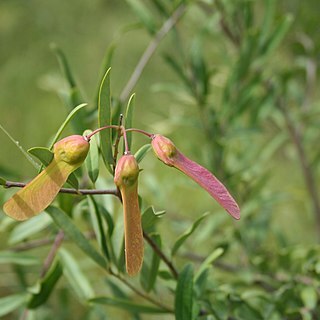Annual or perennial herbs, climbers, shrubs or trees, rarely saprotrophic (not in Australia); roots often aromatic; indumentum of unicellular hairs or plants glabrous. Leaves alternate, rarely opposite or whorled, simple, sessile or petiolate, sometimes spinose or with nectary glands; stipules absent. Inflorescence usually terminal or axillary, in racemes, panicles or spikes, rarely flowers solitary. Flowers bisexual, zygomorphic, white, yellow, pink, purple or blue, usually subtended by a bract and 2 bracteoles. Sepals 5, free or the lower 2 united or rarely fused in a tube, subequal or the lateral pair enlarged and petaloid. Petals 3 or 5, free or variously united, sometimes fused to the base of the staminal tube, the lowermost petal often keeled, lobed or pouched and of contrasting colour. Stamens (2–) 5–8 (–10), usually in 2 series; filaments usually united at base; anthers dehiscing by apical pores or longitudinal slits. Gynoecium of 2–8 fused carpels. Ovary superior, 2–8-locular, ovules 1 per locule, or unilocular (rarely incompletely bilocular) with 4–40 ovules per locule; style simple, apically bilobed or dilated. Fruit a loculicidal capsule or a nut, samara, drupe or berry, often winged. Seeds glabrous or hairy, sometimes arillate.
Stamens 8, rarely 5 or 4, monadelphous beyond the middle or rarely free, the sheath split above, often adnate to the petals; anthers erect, 1–2-celled, opening by an apical pore, rarely 2-valved or opening nearly to the base
Ovary free, 2-celled or rarely 1-celled or 3–5-celled; style simple; ovules solitary in each cell, rarely more, pendulous
Petals 3–5, hypogynous, declinate, outer 2 free or united with the lowermost, upper 2 free or minute and scale-like or 0
Petals 3–5; two upper ones free or joined to the lower one (keel); two lateral ones free, often absent or vestigial
Sepals 5; two lateral (interior) ones often petaloid (wings); two anterior ones sometimes joined
Seeds often pilose, with a conspicuous strophiole; endosperm mostly present; embryo straight
Ovary superior, usually 2-locular (1–5), with 1 pendulous ovule in each loculus
Sepals 5, free, imbricate, the two inner larger, often petaloid, wing-like
Stamens usually 5–8 (rarely 4); filaments usually united in a slit tube
Torus small or rarely expanded into an annular disk within the stamens
Seeds often sericeous, usually carunculate; endosperm usually present
Small trees, woody climbers, shrublets or perennial or annual herbs
Flowers hermaphrodite, zygomorphic; pedicels often articulated
Leaves alternate, rarely opposite, simple; stipules none
Leaves usually alternate, simple, entire, exstipulate
Herbs, shrubs, climbers or rarely small trees
Fruit a capsule, samara or drupe
Fruit a capsule, samara or drupe

